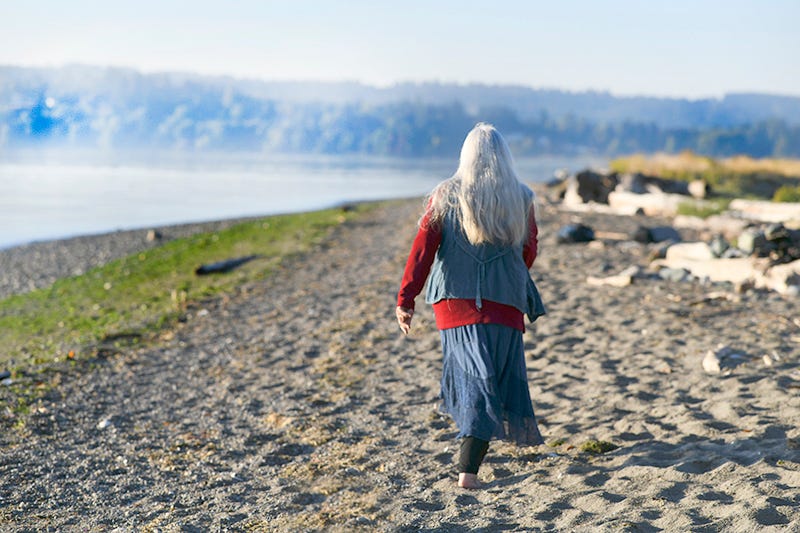By Suzanna Leigh
My friend Geri told me she owns part of the beach on the north end of Tramp Harbor, where the road to Ellisport runs along the shore (in Washington State, most beaches are privately owned as far as the mean low tide line).
I think she owns the part with the old pilings that once held up a dock, a store, and a hotel. I believe that dock was where oil was brought in to heat the Beall Greenhouses when they were operating. I imagine barrels of oil being rolled up the ravine that runs up from the beach to Beall Road, next to the greenhouses. There is a stream that runs down the ravine, and I imagined the barrels of oil were rolled up the stream.
I wondered, was there more water in the stream in those days? Or was there a pipeline for the oil? Well, thanks to detective work by my friend Mary Alice, I learned the Bealls bought a truck to haul the oil barrels up the hill to the greenhouses. She found this in a newspaper article dated January 5, 1923!
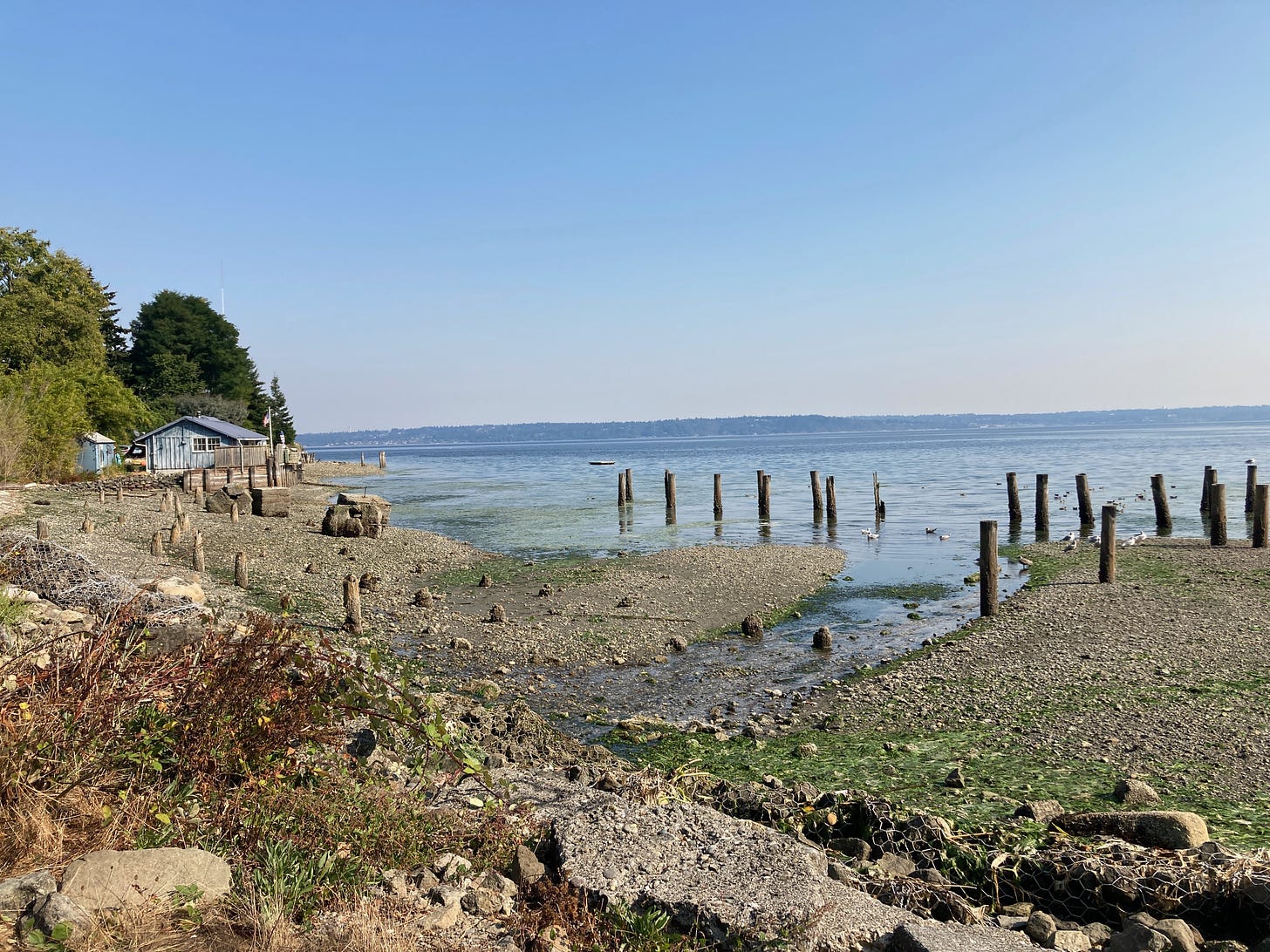
Gulls wash in the water at low tide where the stream runs down across the tide flats into the Salish Sea. They perch on the pilings, sometimes one on each piling. They search for clams in the sand. When a gull finds one, he flys up high with it, then drops it on the rocks and sand below. If the gull is lucky, the clam shell breaks, and the gull has lunch. The beach is littered with broken clam shells.
The pigeons, who live under the old Standard Oil a quarter of a mile away, wait their turn to drink the fresh water and bathe in the stream. Beside the stream, out by the furthest pilings, hundreds of sand dollars and thousands of mussels blanket the sand.
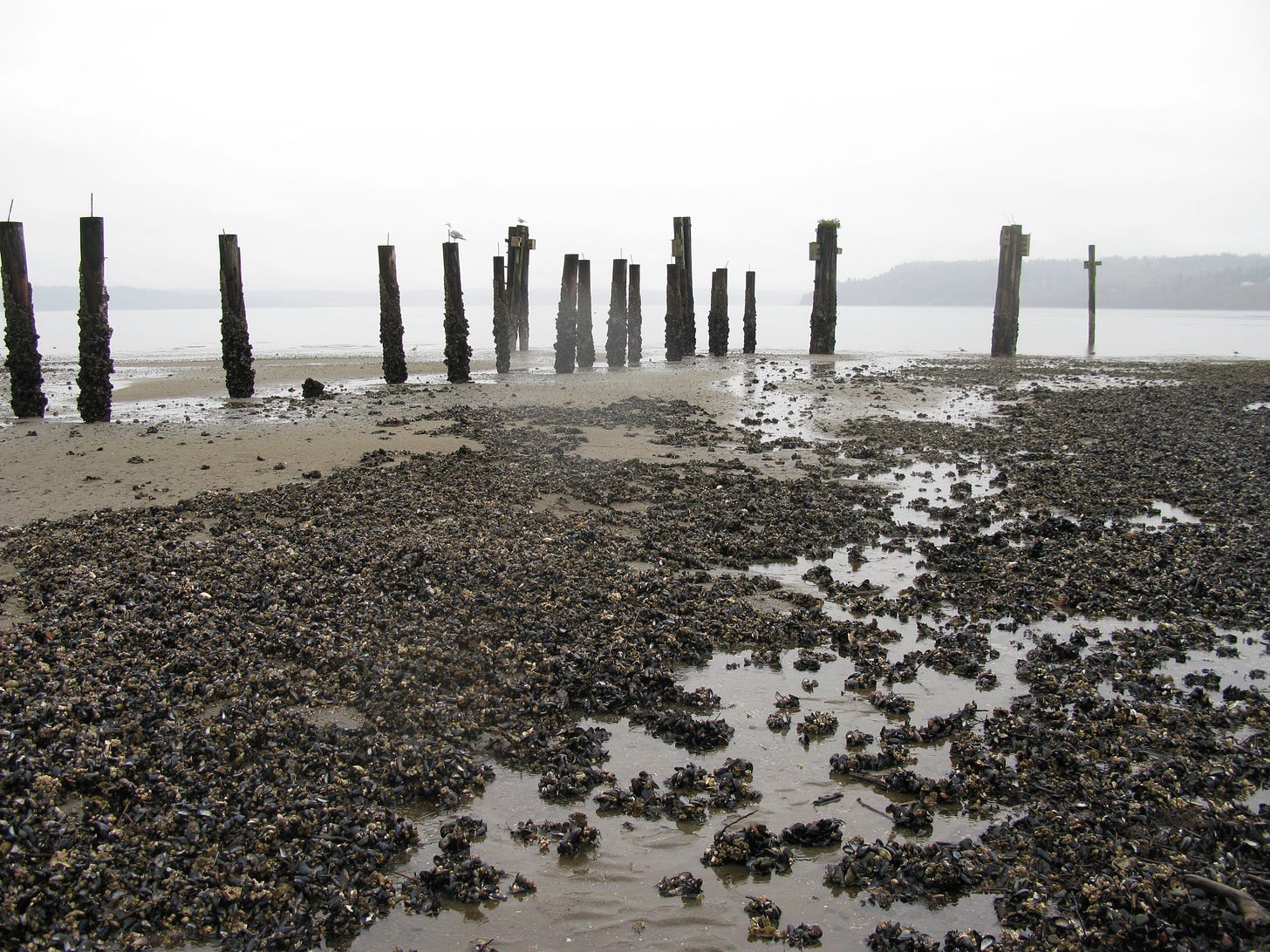
Once I was walking by while the road crew was – finally – fixing the flood that has covered that part of the road for at least two years. They explained that this fix was only temporary, as the permanent fix was stuck in the permit process, because that part of the beach is owned by the people across the street.
A friend wanted to grow oysters at the low, low tide line. The neighbors were up in arms! “Oysters will pollute the beach!” they said, and “There is oil under the sand from the Beall Green House operation! The oysters will be polluted and not fit to eat!” The permit to grow oysters was denied.
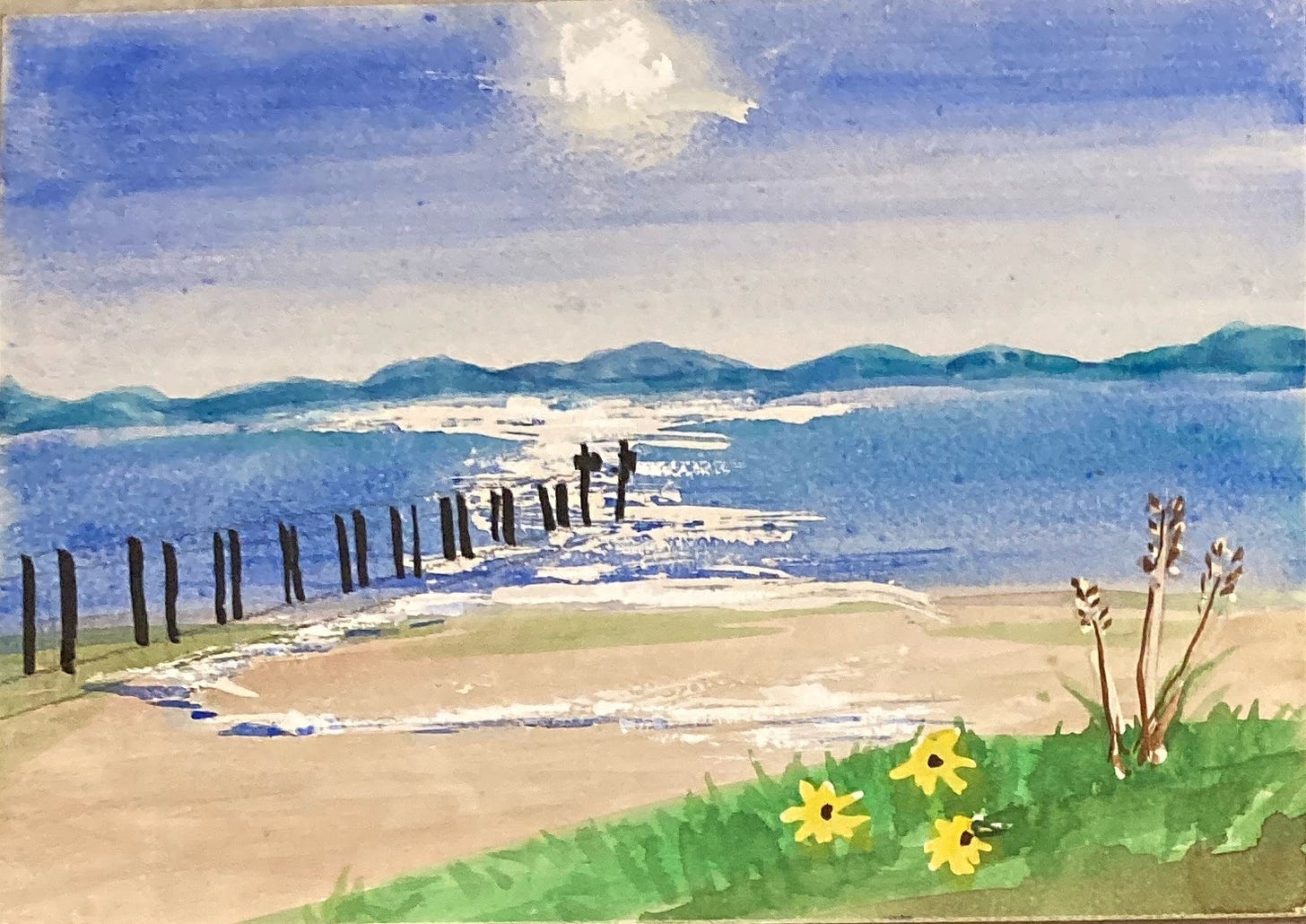
When I had the school in my home, we would often walk down to the beach. The large root system of a driftwood tree was by turns a castle and a pirate ship. We turned over rocks when the tide was low and watched tiny crabs scuttle for safety. Sometimes, we would pick up a crab no bigger than my thumbnail. Its pinchers were too tiny to pinch the small hands of my students. We would admire the little crab for 30 seconds or so, then gently put it back in its home. Then we replaced the rock so that it and all the other tiny crabs could hide from hungry seagulls.
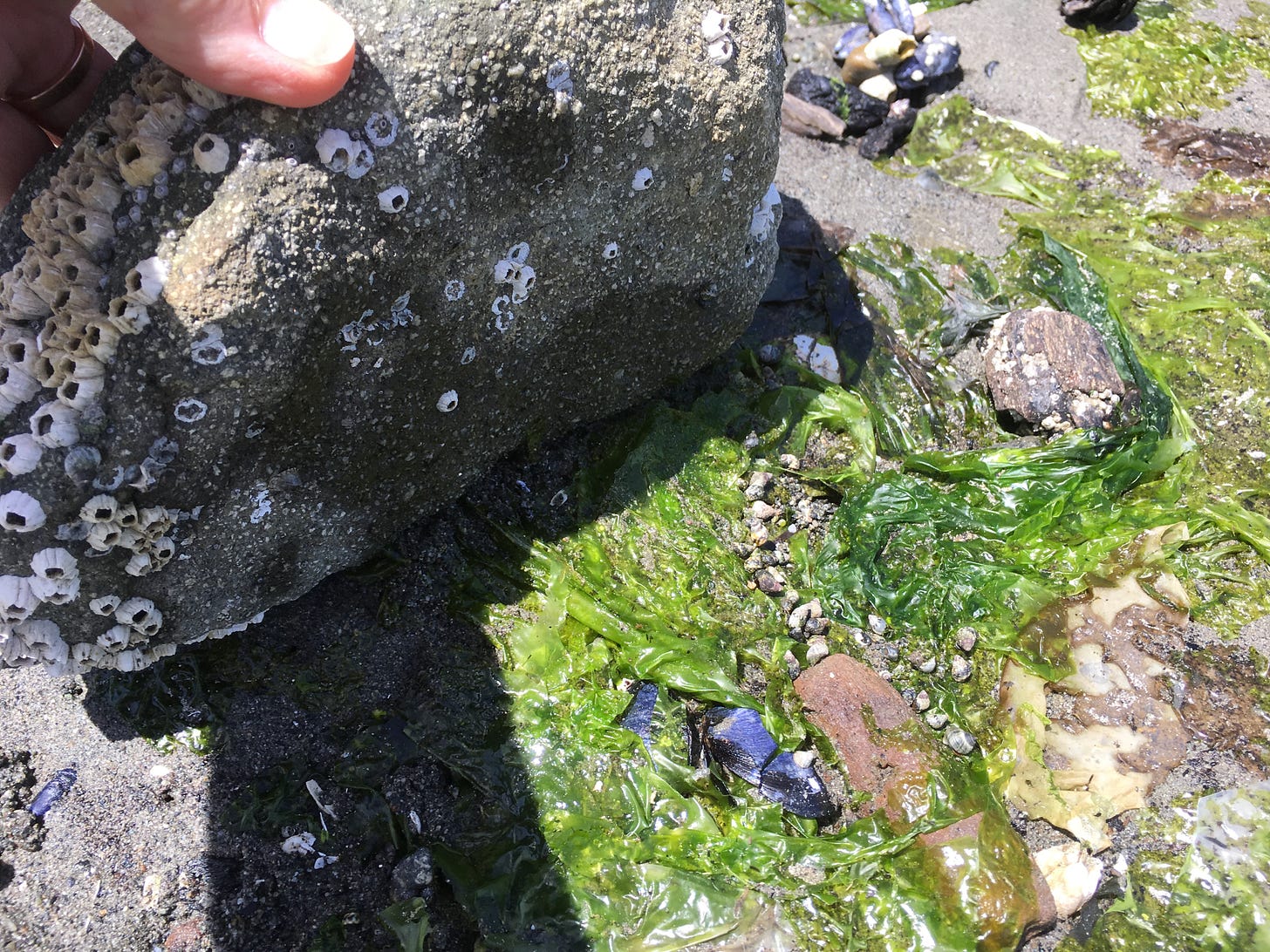
Sometimes, we found moon snail egg cases, and once we found a whole live moon snail. Its shell was about 5 inches across, and its foot extended way out beyond the edges of its shell. More often, we found evidence of moon snails: tiny holes in empty clam shells, drilled by a moon snail lunching on live clams. Often, we found pieces of moon snail shell, smooth inside with blushes of lavender, pink, and cream.
I picked up one of these shells once, an especially pretty one, and admired its beauty before putting it back on the sand. Later, we all sat on a driftwood log and ate our snacks.
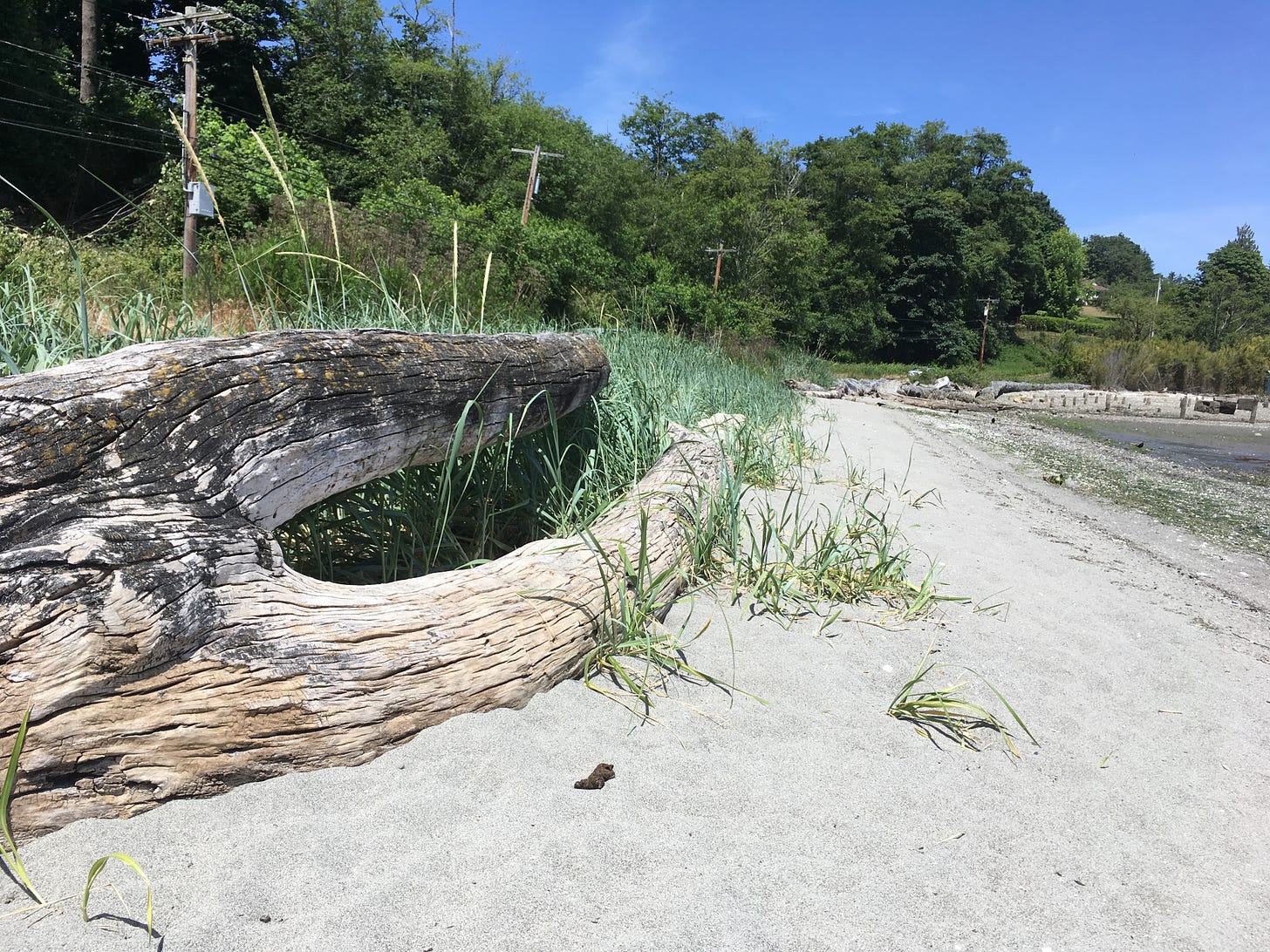
One child dropped a piece of cheese in the sand, and I tossed the sand-covered cheese to the seagulls. One gull caught it in her beak and swallowed it down. A few minutes later, as I bent down to help a child with his shoe, a shell dropped down beside me – the very shell I had been admiring earlier. I looked up to see the gull who had caught the cheese flying away. She had dropped the shell as a gift for giving her the cheese!
If that gull thought the shell was hers to give, does that mean the beach belongs to the gulls? On Google Maps, this beach is called Crow Beach; does that mean the beach belongs to the crows who hold conventions there? I believe the crows think so.
In winter, wigeons and ducks swim in the shallow waters of an incoming tide. One morning, I came down about dawn. A flock of geese was just waking up, taking their morning baths in the freshwater stream. The sound of honking in the distance told me another flock was coming; as they swooped in and landed in the water in front of me, the geese already there started greeting them loudly. Sometimes, an eagle would soar overhead, and all the water birds would take to the air at once, calling “Beware! Danger!”
Does the beach belong to the wigeons, ducks, and geese? Or to the eagle, or to the heron standing on one leg at the water’s edge, patiently waiting for an unwary fish? Who are we, humans, to think the beach belongs to us?
